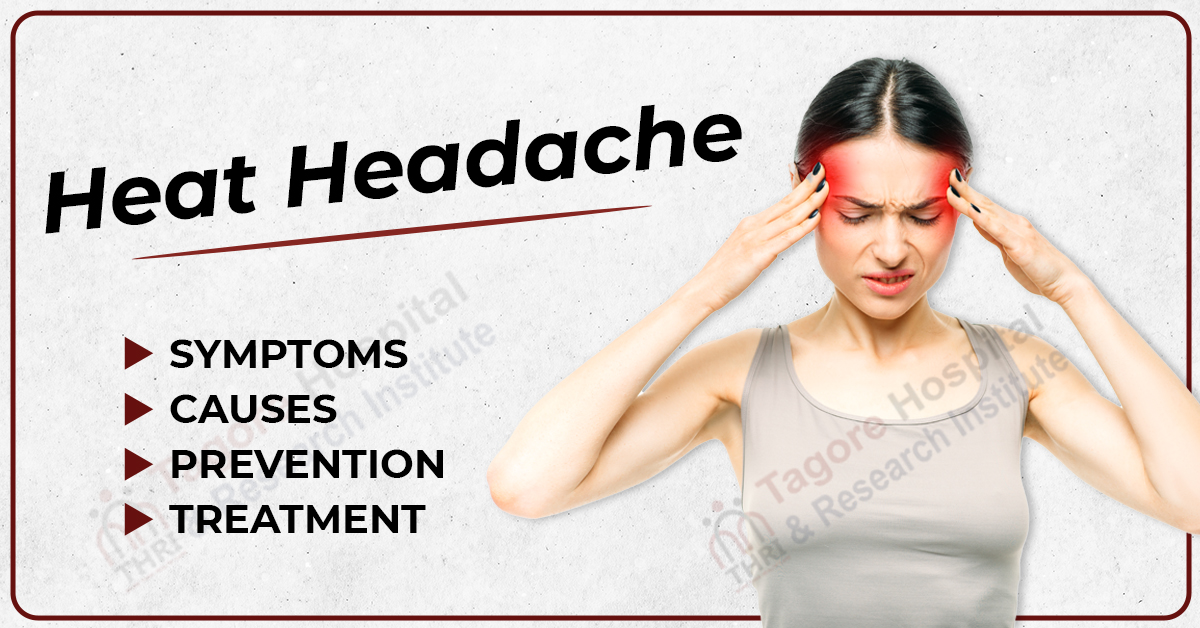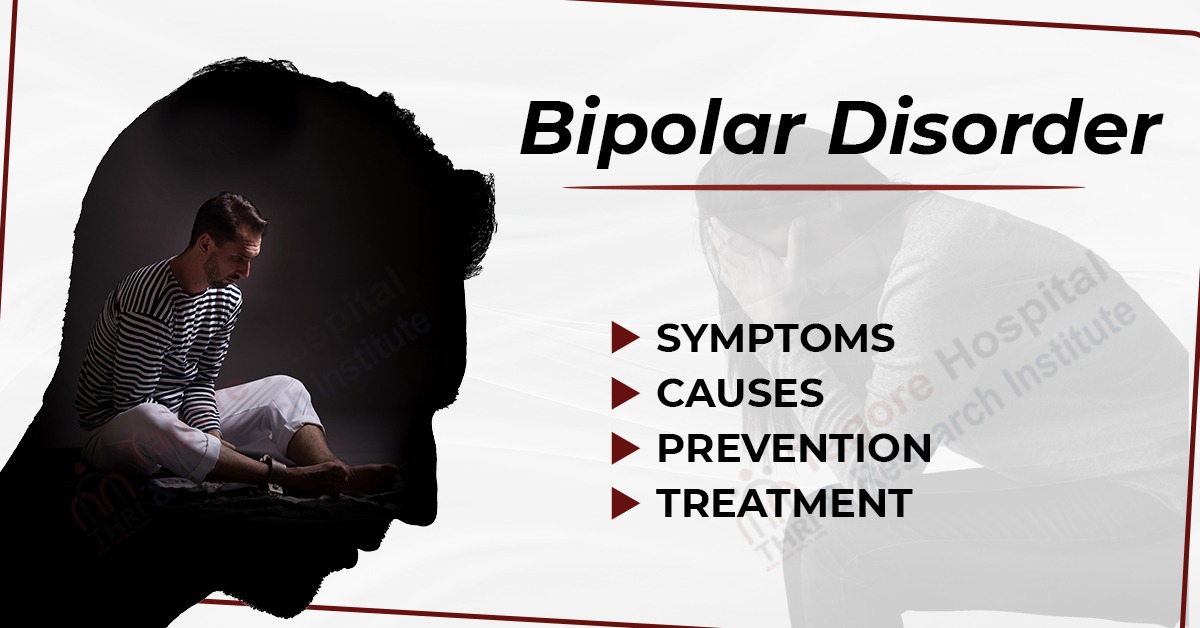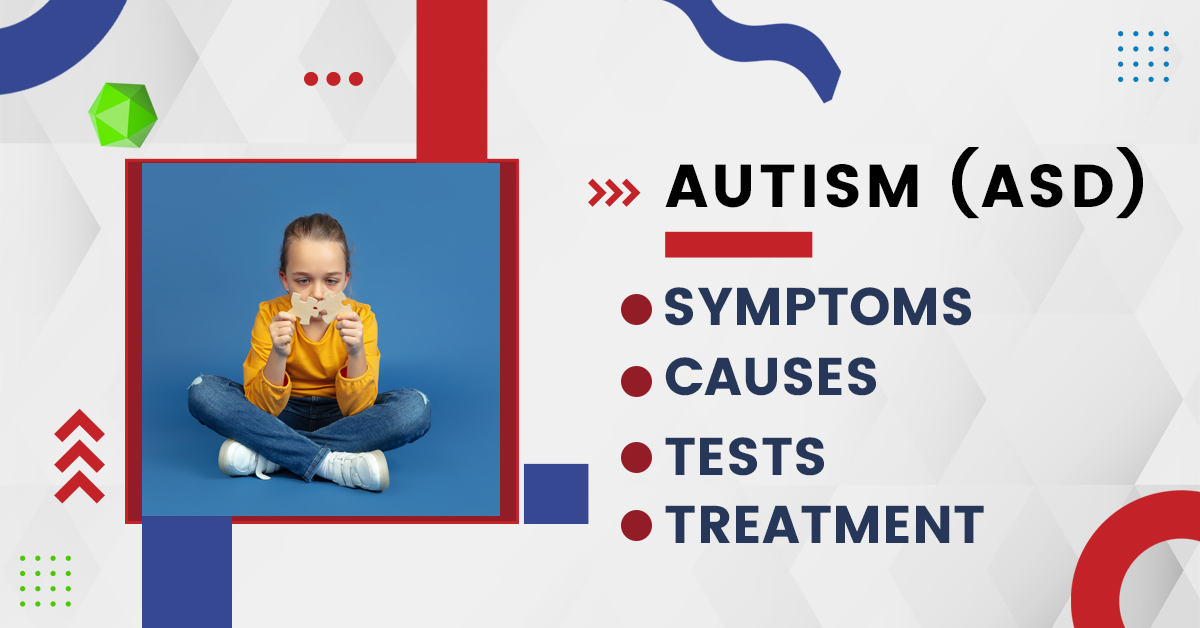- By Tagore Admin
- Posted June 26, 2023
Overview
In the United States, 20% of women and over 10% of men suffer from severe headaches and migraines regularly.
Heat headaches seem to be more frequent in the summer when temperatures are high. For a variety of underlying reasons, including increased risk of dehydration, environmental pollution, heat exhaustion, and even heat stroke as temperatures rise, headache frequency may increase as the weather becomes warmer.
Despite conflicting data, heat itself may be a headache trigger. A headache brought on by heat may feel like a throbbing, dull pain at your temples or in the back of your head. A heat-related headache may progress to more significant interior discomfort, depending on the reason.
Causes of Heat Headache
The primary cause of a heat headache is the body's response to heat stress. Here are some possible causes of heat headaches:
● Dehydration: Insufficient fluid intake or excessive sweating in hot weather can lead to dehydration. Dehydration can cause blood vessels in the brain to constrict, resulting in a headache.
● Heat exhaustion: Prolonged exposure to high temperatures can lead to heat exhaustion, a condition that occurs when the body overheats. Symptoms of heat exhaustion may include headache, dizziness, nausea, and fatigue.
● Heat stroke: If heat exhaustion is not treated promptly, it can progress to heat stroke, a severe and potentially life-threatening condition. Heat stroke is characterized by a high body temperature, altered mental state, and other symptoms, including a throbbing headache.
● Vasodilation: Heat causes blood vessels in the body to expand or dilate, including those in the brain. This expansion can trigger headaches, especially in individuals who are prone to migraines or tension headaches.
● Sun exposure: Direct exposure to the sun for extended periods without protection, such as wearing a hat or using sunscreen, can result in a headache due to the combination of heat and sun-induced inflammation.
● Environmental factors: Other environmental factors associated with heat, such as high humidity or excessive indoor heat, can contribute to the development of heat headaches.
● Physical exertion: Engaging in intense physical activities in hot conditions can increase body temperature, dehydration, and subsequent headaches.
You Can Read Also:- Facts You Need To Know About Blood Cancer (Leukemia)
Symptoms of Heat Headache
The symptoms of heat headaches can vary from person to person, but common symptoms include:
● Throbbing or pulsating pain: Heat headaches typically cause a persistent throbbing or pulsating pain that affects one or both sides of the head. The level of discomfort might range from mild to severe.
● Headache onset: The headache often develops during or after exposure to high temperatures or physical exertion in a hot environment.
● Scalp sensitivity: The scalp may feel tender or sensitive to the touch. Even brushing the hair or wearing a hat may worsen the pain.
● Increased body temperature: Heat headaches can be accompanied by an increase in body temperature, as well as other symptoms of heat exhaustion or heat stroke, such as dizziness, nausea, vomiting, and excessive sweating.
● Fatigue and weakness: Prolonged exposure to heat can lead to fatigue and weakness, which may exacerbate the headache symptoms.
● Worsening with activity: Heat headaches often worsen with physical activity or exposure to additional heat. This can make it challenging to perform daily tasks or engage in exercise.
● Relief in cooler environments: The headache symptoms may subside or improve when moving to a cooler environment or applying cool compresses to the head.
It's important to note that if you experience severe or persistent headaches, it's recommended to consult a healthcare professional for an accurate diagnosis and appropriate treatment. They can evaluate your symptoms, rule out any underlying causes, and provide guidance on how to manage and prevent heat-induced headaches.
When to See a Doctor?
Dehydration or weather changes usually cause mild headaches and migraines that disappear on their own in one to three hours. It is, however, possible to suffer from a headache brought on by heat that requires immediate medical attention. If symptoms persist or worsen, seeking care from the best hospital in Jaipur is advisable for prompt and effective treatment.
If you experience any of the following symptoms along with a heat-induced headache, seek medical attention right away:
● Vomiting and nausea
● A fever of at least 103.5 degrees is considered high
● Pain in your head that spikes suddenly or is intense
● Disorientation, confusion, or slurred speech
● Excessive paleness or clamminess
● The inability to eat or drink due to extreme thirst
Make an appointment to see a doctor if you experience headaches or migraines more than twice a week for three months without experiencing any emergency symptoms.
If you regularly get migraines, you are aware of what to expect from your body when one strikes. Call a doctor if you encounter symptoms that are unusual for a migraine or if your migraine symptoms linger longer than seven hours.
You Can Read also:- Eczema: What is Eczema, Symptoms, Causes, Types Treatment
Treatment of Heat Headache
The primary goal of treatment is to alleviate symptoms and prevent future episodes. Listed below are some helpful tactics:
● Rest and Cool Down: If you experience a heat headache, it's important to rest in a cool, shaded area. Remove yourself from the hot environment and find a place with air conditioning or a fan. Apply a cold compress or cool towel to your forehead or the back of your neck to help lower your body temperature.
● Hydration: Drink plenty of fluids, particularly water, to stay hydrated. Dehydration can contribute to headaches, especially in hot weather. Avoid beverages that contain caffeine or alcohol, as they can further dehydrate your body.
● Medications: Over-the-counter pain relievers such as acetaminophen (Tylenol) or nonsteroidal anti-inflammatory drugs (NSAIDs) like ibuprofen (Advil, Motrin) or naproxen sodium (Aleve) can help alleviate the pain associated with heat headaches. Always follow the recommended dosage instructions and consult with a healthcare professional if you have any underlying health conditions or concerns.
● Avoid Triggers: Identify and avoid triggers that may contribute to heat headaches. These can include excessive heat exposure, strenuous physical activity in hot weather, certain foods or drinks, and high levels of stress. Take steps to minimize your exposure to these triggers whenever possible.
● Stay Cool: Take measures to stay cool and prevent overheating. Wear lightweight, loose-fitting clothing made of breathable fabrics, such as cotton. Use sunscreen to protect your skin from sunburn, and wear a hat or use an umbrella to shade yourself from direct sunlight.
● Gradual Acclimatization: If you know you'll be exposed to a hot environment or engaging in strenuous physical activity in the heat, it can be helpful to gradually acclimate your body to these conditions. Start with shorter durations and gradually increase the time and intensity over several days or weeks.
● Seek Medical Advice: If you experience severe or persistent headaches, or if the headaches are accompanied by other concerning symptoms such as dizziness, nausea, vomiting, or changes in consciousness, it's important to seek medical attention. A medical expert can assess your condition, make an accurate diagnosis, and make treatment recommendations based on your needs.
Remember, these recommendations are general, and it's always best to consult with a healthcare professional for personalized advice based on your specific situation.
Prevention of Heat Headache
To prevent heat headaches, you can follow these recommendations:
● Stay hydrated: Drink plenty of water, throughout the day. Adequate hydration helps maintain average body temperature and prevents dehydration, which can contribute to heat headaches.
● Avoid excessive heat exposure: Limit your time spent in hot and humid environments, particularly during peak daytime temperatures. When feasible, seek out shade or air-conditioned areas.
● Dress appropriately: Dress in comfortable, airy, loose-fitting clothing that will help you maintain a healthy body temperature.
● Use protective accessories: Use an umbrella or a hat with a wide brim to protect yourself from the sun. Your eyes can be shielded from harsh sunshine and strain by wearing sunglasses.
● Take breaks and rest: If you're engaging in physical activities or spending time outdoors in high temperatures, take frequent breaks in shaded or cool areas. Resting allows your body to recover and prevents excessive heat buildup.
● Limit strenuous activities during peak heat: Avoid intense physical exercise or exertion during the hottest parts of the day. Opt for early morning or late evening when temperatures are cooler.
● Use cooling methods: Apply cold compresses or use cooling towels on your forehead or the back of your neck to help cool your body temperature and alleviate potential heat-related discomfort.
● Be mindful of medications: Some medications can make you more sensitive to heat or increase the risk of dehydration. Consult with your healthcare provider about any medications you're taking and whether they might impact your heat tolerance.
● Pay attention to warning signs: If you start experiencing symptoms like headache, dizziness, nausea, or weakness in hot environments, immediately move to a cooler place and rest. Consult a doctor if your symptoms continue or get worse.
Remember, heat headaches can be a sign of more serious heat-related illnesses like heat exhaustion or heatstroke. It's crucial to recognize the symptoms and take appropriate measures to cool down and seek medical help if necessary.
You Can Read also: Infected Stitches
Summary
A heat headache, also known as a heat-induced headache or a sun headache, is a type of headache that is triggered or exacerbated by exposure to high temperatures or excessive heat. It typically occurs as a result of prolonged exposure to the sun or hot environments, leading to dehydration and increased blood flow to the head. Here is a summary of a heat headache:
Heat headaches are caused by exposure to high temperatures or excessive heat, leading to dehydration and increased blood flow to the head.
Prolonged exposure to the sun or hot environments can trigger or worsen heat headaches.
Symptoms of a heat headache may include throbbing or pulsating pain, usually on both sides of the head, sensitivity to light and sound, fatigue, and nausea.
Dehydration is a common factor in heat headaches, as it can lead to a decrease in blood volume and inadequate oxygen supply to the brain.
Prevention and treatment of heat headaches involve staying hydrated by drinking plenty of fluids, avoiding direct sun exposure during peak hours, wearing protective clothing and a hat, seeking shade or cool environments, and using cooling measures such as applying a cold compress to the forehead or taking a cool shower.
If a heat headache persists or is accompanied by severe symptoms such as confusion, dizziness, or loss of consciousness, it is important to seek medical attention, as it may indicate a more serious heat-related illness.
Tags





